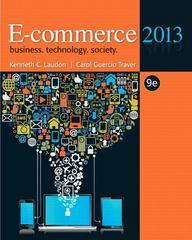Question
The table below lists the amounts of cars and computers that producers in the U.S. and Brazil can produce using one worker per day .
The table below lists the amounts of cars and computers that producers in the U.S. and Brazil can produce using one worker per day.
U.S.
Brazil
Number of Cars
10
5
Number of Computers
100
25
1. Which country has an absolute advantage at producing cars? _________________________
2. Which country has an absolute advantage at producing computers? ____________________
Determine the opportunity costs for each country:
U.S.
Brazil
Opportunity Costs of producing 1 Car
Opportunity Costs of Producing 1 Computer
3. Based on the calculated opportunity costs, which country has a comparative advantage in producing cars?
4. Based on the calculated opportunity costs, which country has a comparative advantage in producing computers?
5. Suppose each country has total of 5 workers. Draw the production possibilities frontier for each country[AM1].
[AM2]
[AM3]
6. When there is no trade, each country consumes whatever they can produce domestically.Currently the U.S. is producing 10 cars and 400 computers per day, and Brazil is producing 10 cars and 75 computers per day. Find these production points on each country's PPF. Label the U.S. current production on the PPF as point A, and label the Brazil production point B.
7. The United States and Brazil realize that they will be better off if they specialize in producing only one good and trade for the other. Based on each country' comparative advantage, the United State should specialize and produce _____________________ and Brazil should specialize and produce ___________________________.
8. Suppose that each country completely specializes in production of the good that it has comparative advantage at. (Completely specialize means that they only produce one good and shut down the production of the other good)
9. Assume that the U.S. and Brazil were able to identify a trade that would be mutually beneficial and agreed to trade 15 cars for 100 computers. Summarize the gains from trade for Brazil and the U.S. in the table below;
USA
Brazil
Cars
Computers
Cars
Computers
Production and Consumption without trade
Specialization
Trade
100 computers for 15 cars
Consumption with trade
Gains from trade (increase in consumption)
9. Illustrate the consumption points after trade on each country's production possibilities frontier. Label these points "X" for the U.S. and "Y" for Brazil.
10. Which country benefits from trade?
11. which nation received a better deal in this trade?
12. The price of a car can be expressed in terms of a computer. What range of ratios of car and computer would allow both parties to benefit from trade?
[AM1]We assume linear PPFs for our examples in this section. To draw each PPF you only need to identify two points on each line.
[AM2]Notice that each PPF illustrates the production of 5 workers per day. For example, in the US one worker can produce 10 cars per day. If the US uses all 5 workers to produce only cars (and no computers), the US can produce 50 cars per day. This would be one point on the PPF for the United States.
Another point on the PPF for the United States is the point where the US uses all 5 workers in the production of computers only. How many computers can the US produce if uses all 5 workers producing computers?
Connect these two points to get the PPF for the US.
[AM3]Find similar points for Brazil to draw the PPF for Brazil.
Step by Step Solution
There are 3 Steps involved in it
Step: 1

Get Instant Access to Expert-Tailored Solutions
See step-by-step solutions with expert insights and AI powered tools for academic success
Step: 2

Step: 3

Ace Your Homework with AI
Get the answers you need in no time with our AI-driven, step-by-step assistance
Get Started


